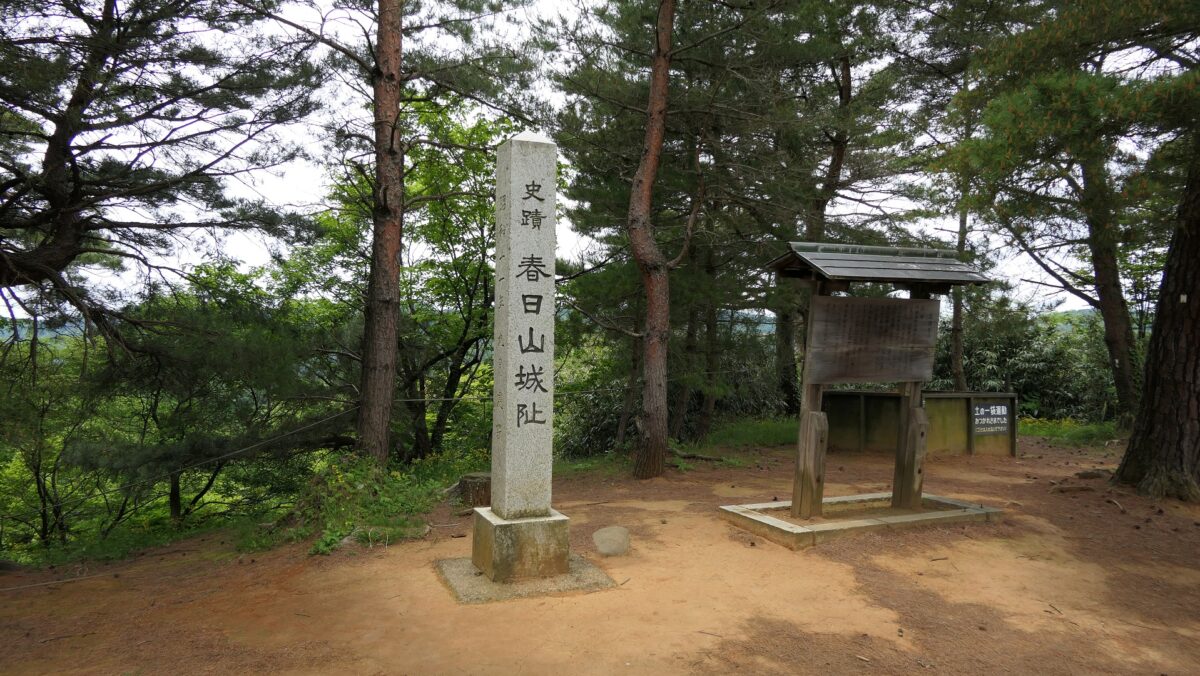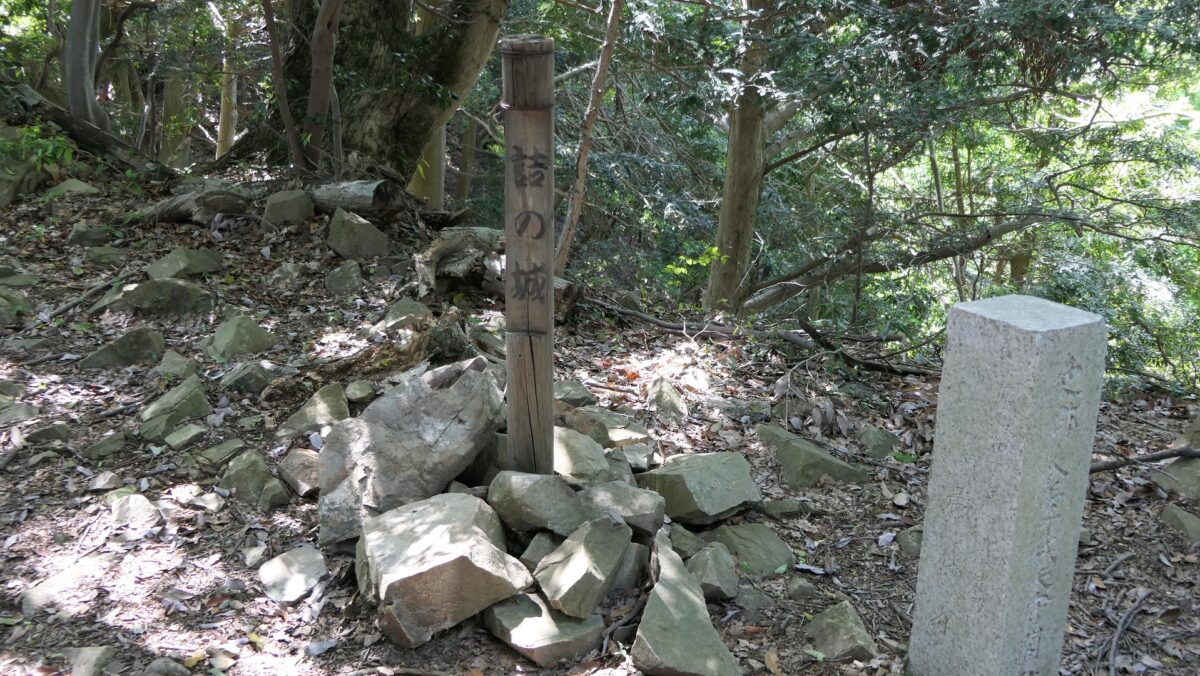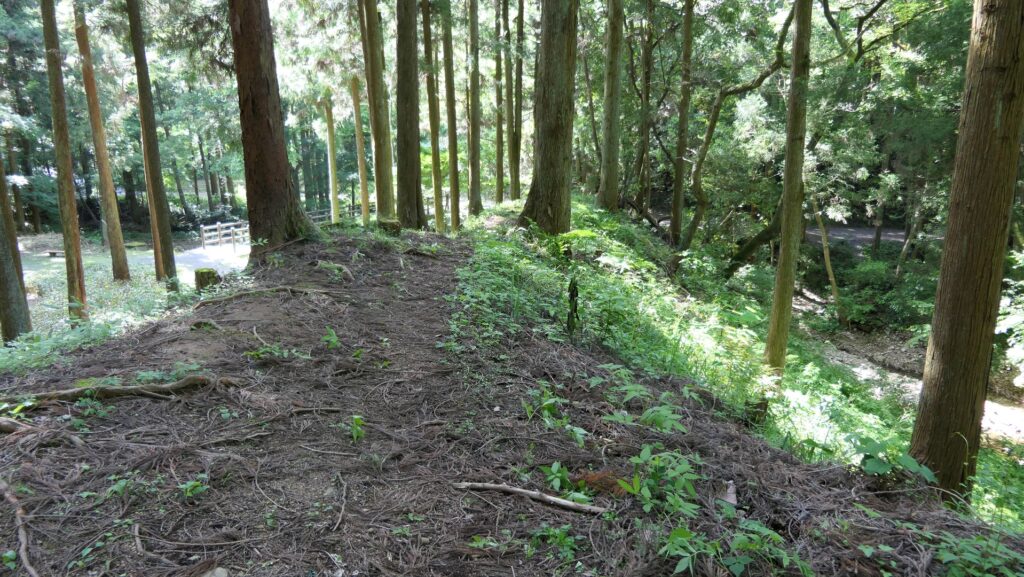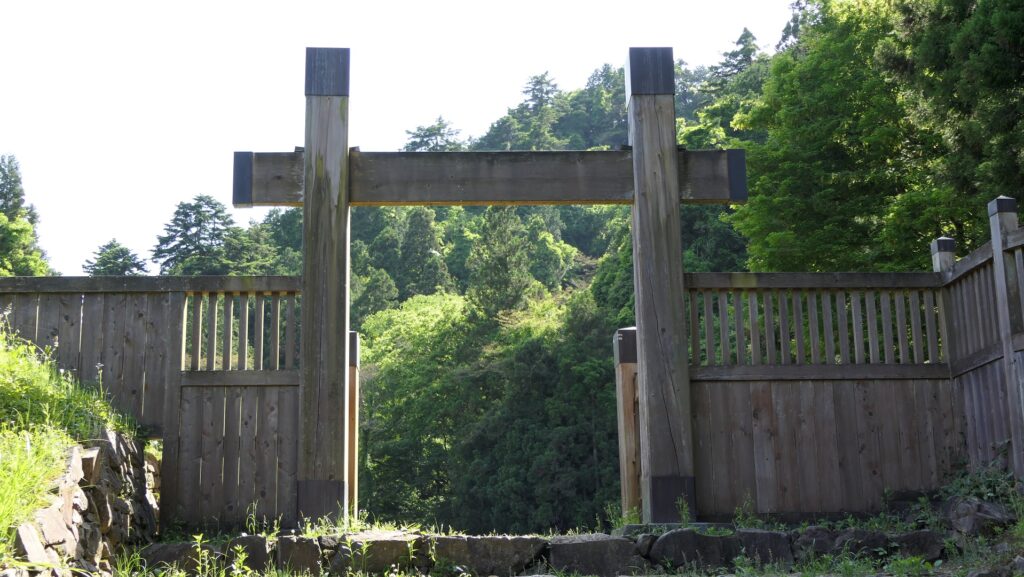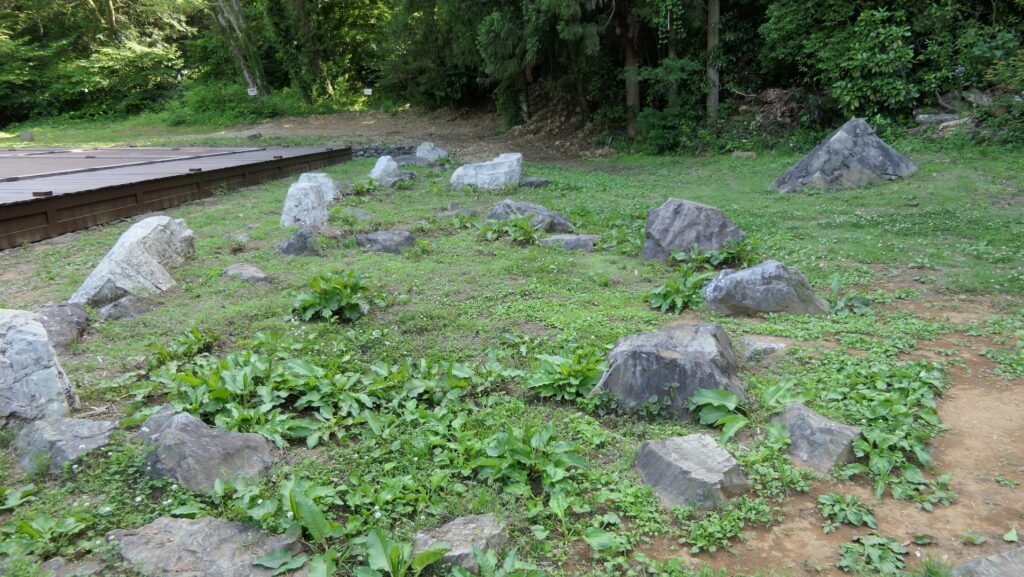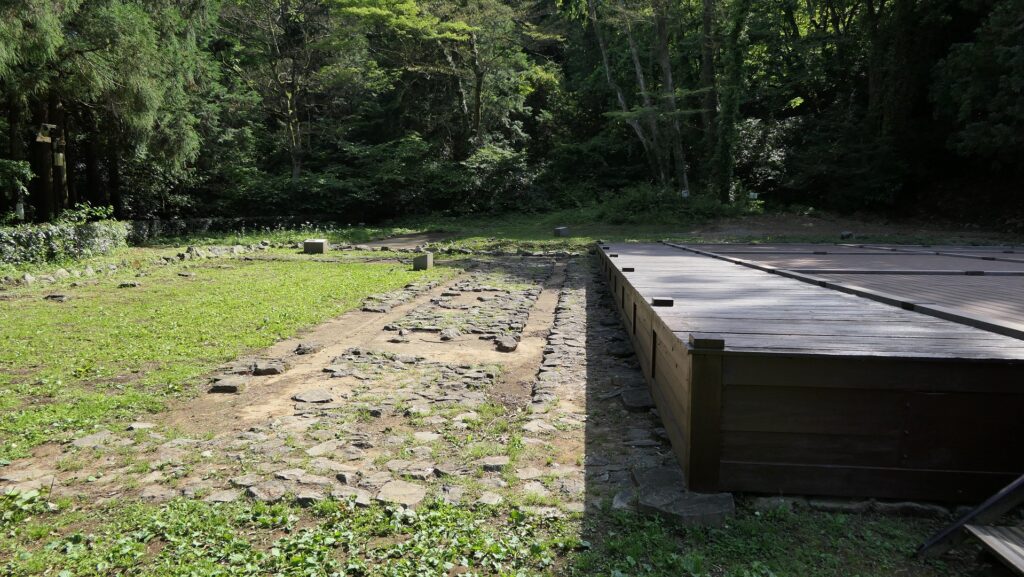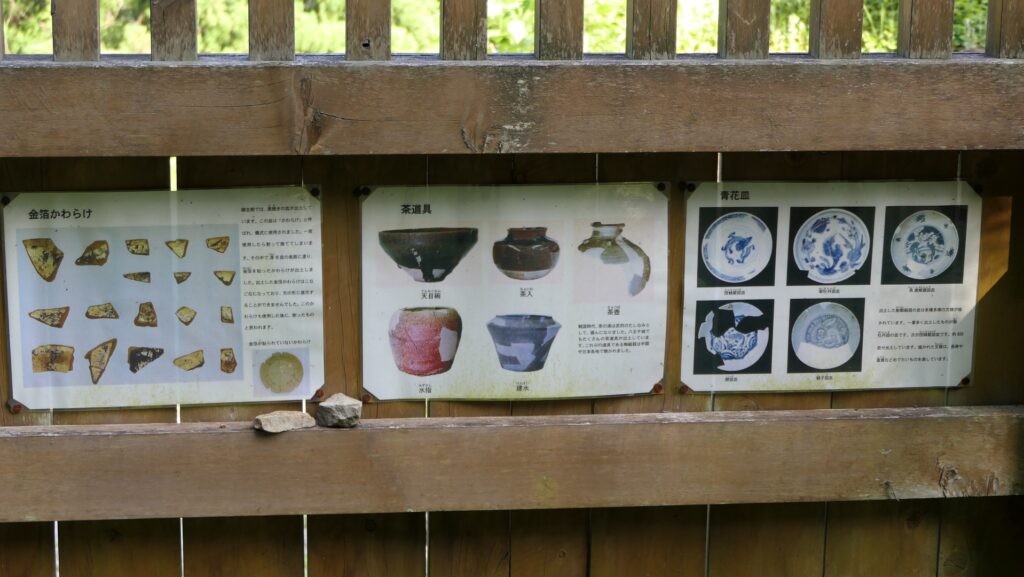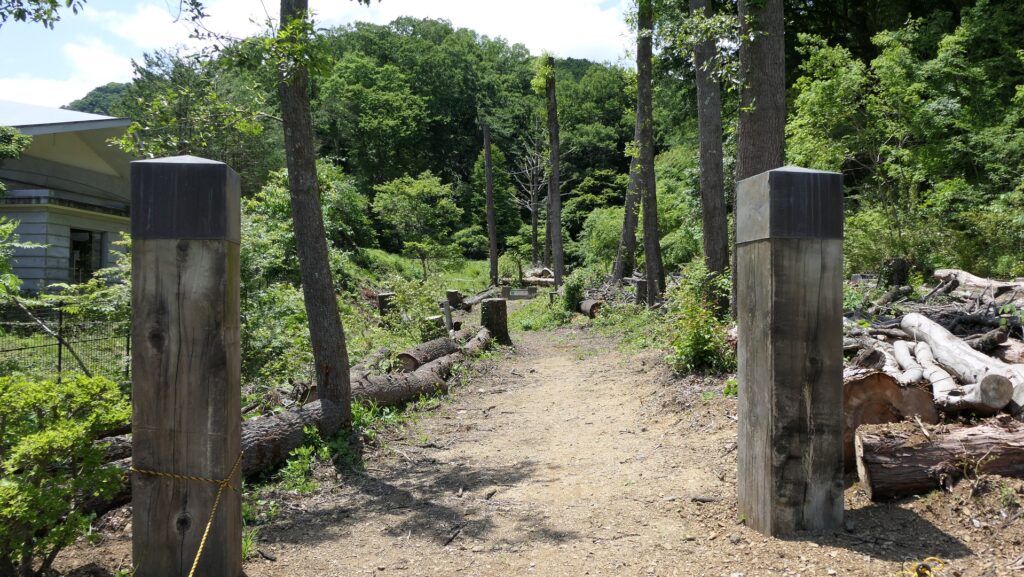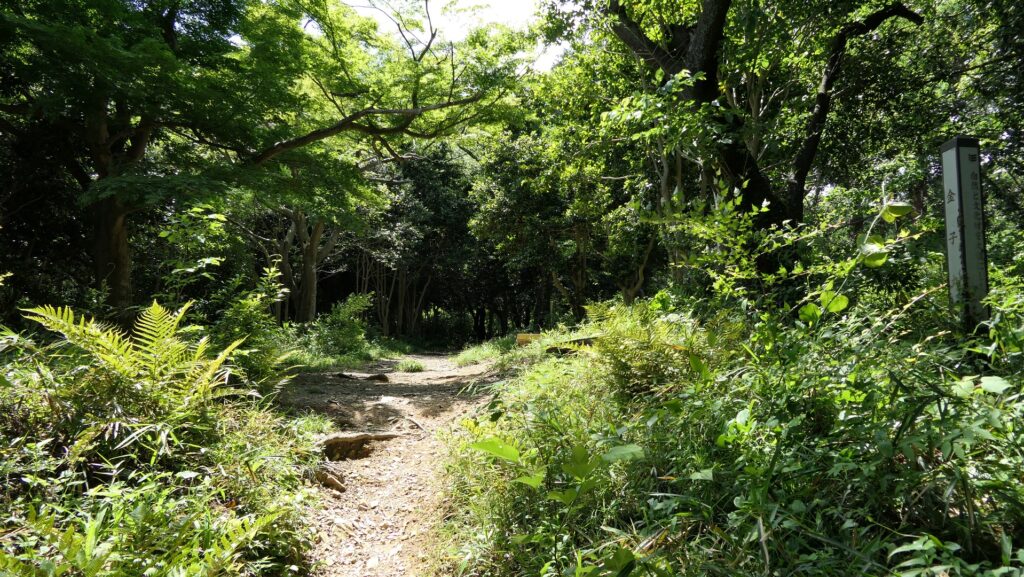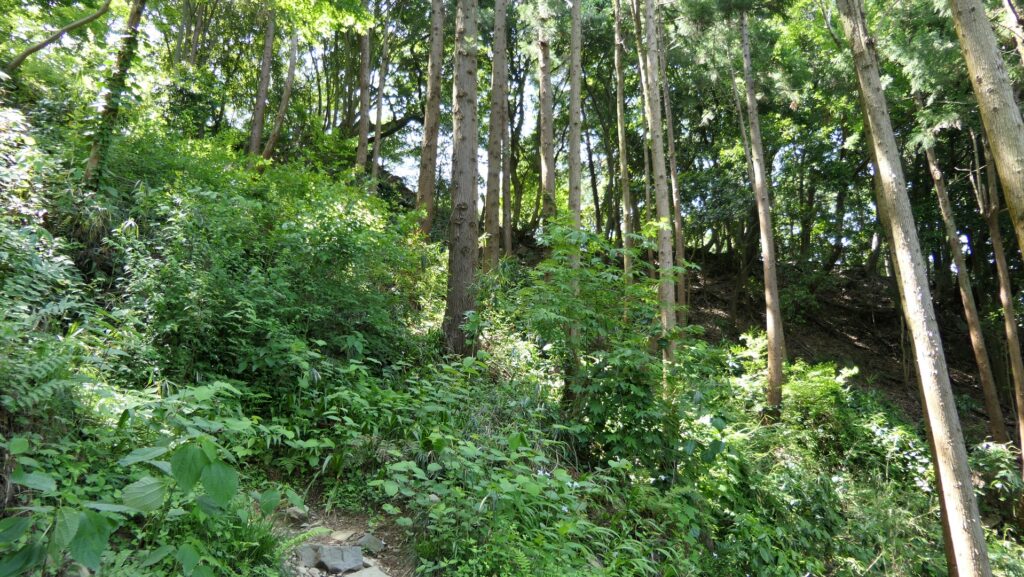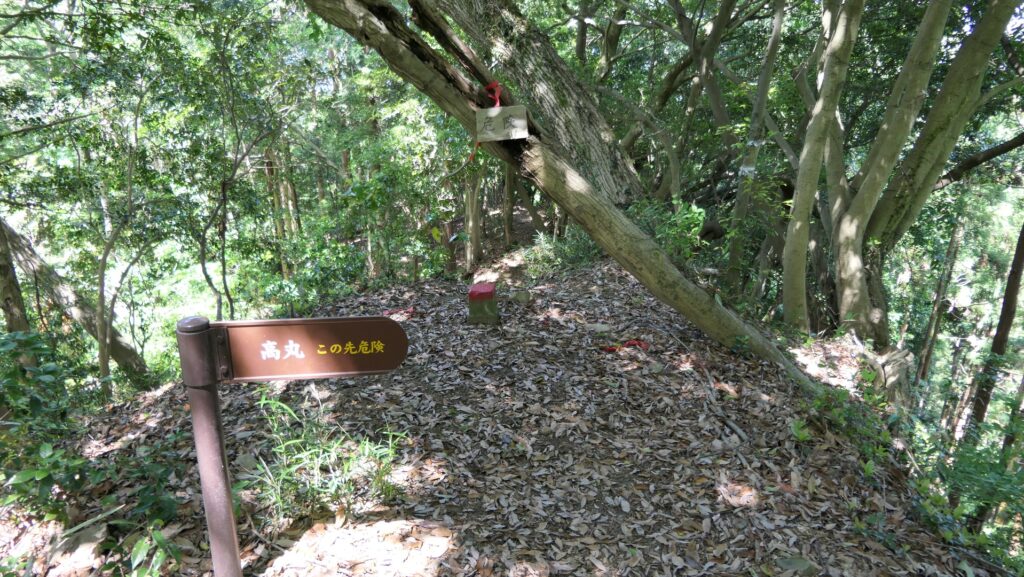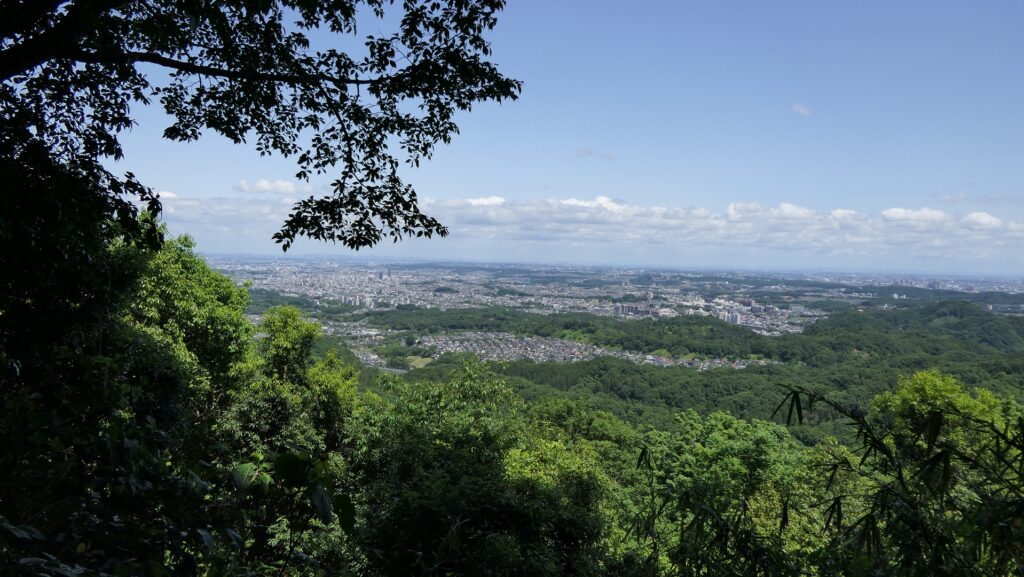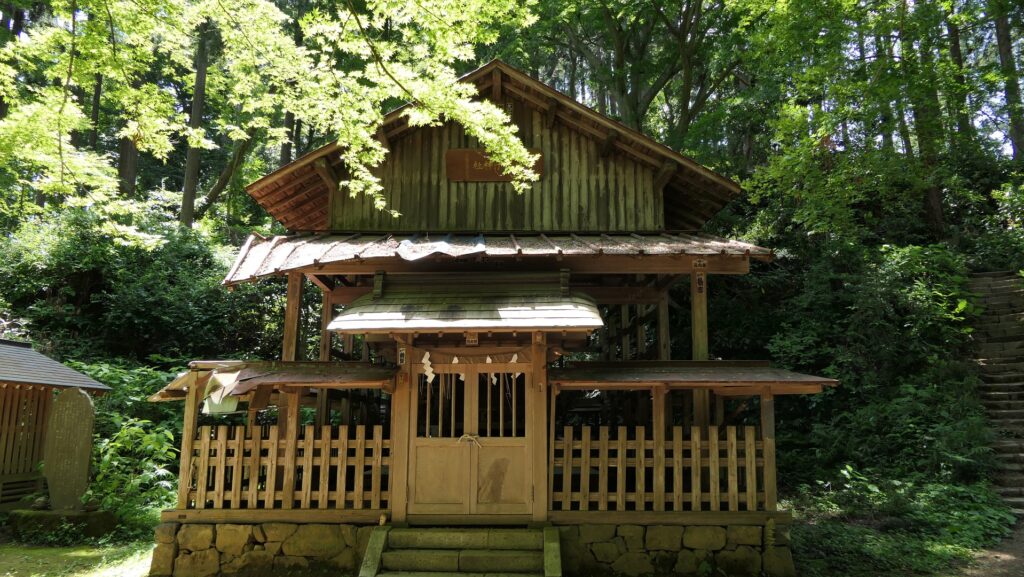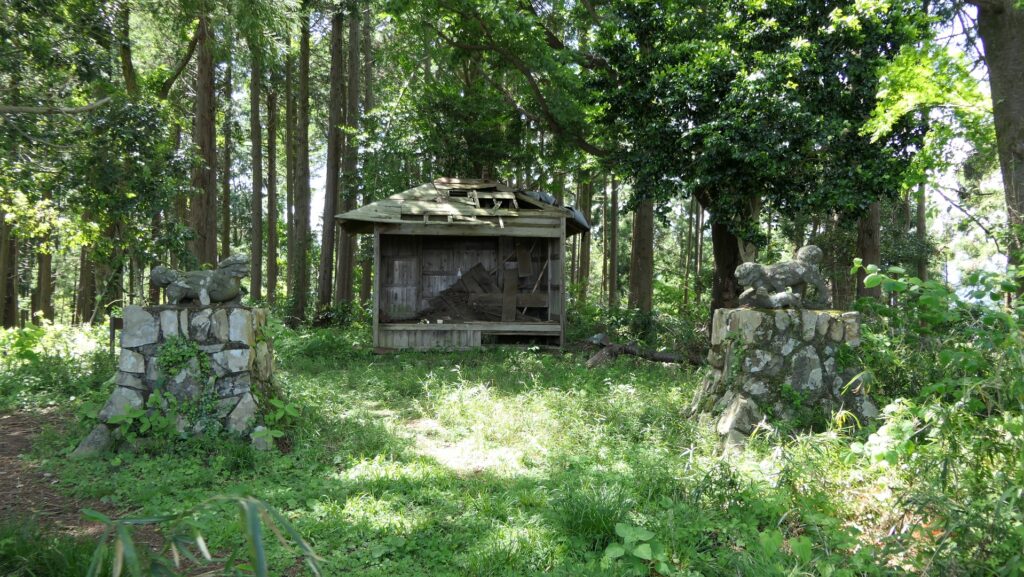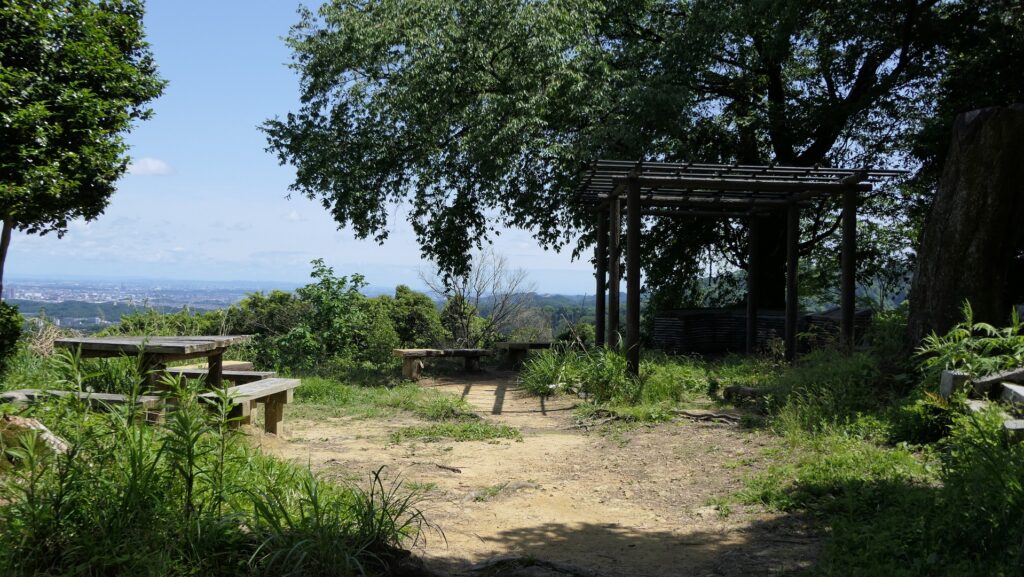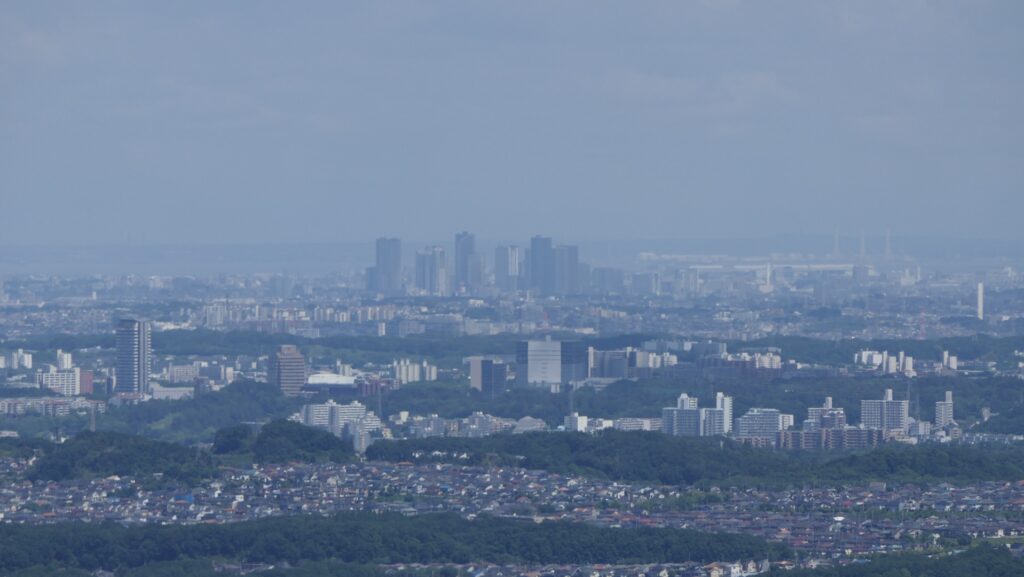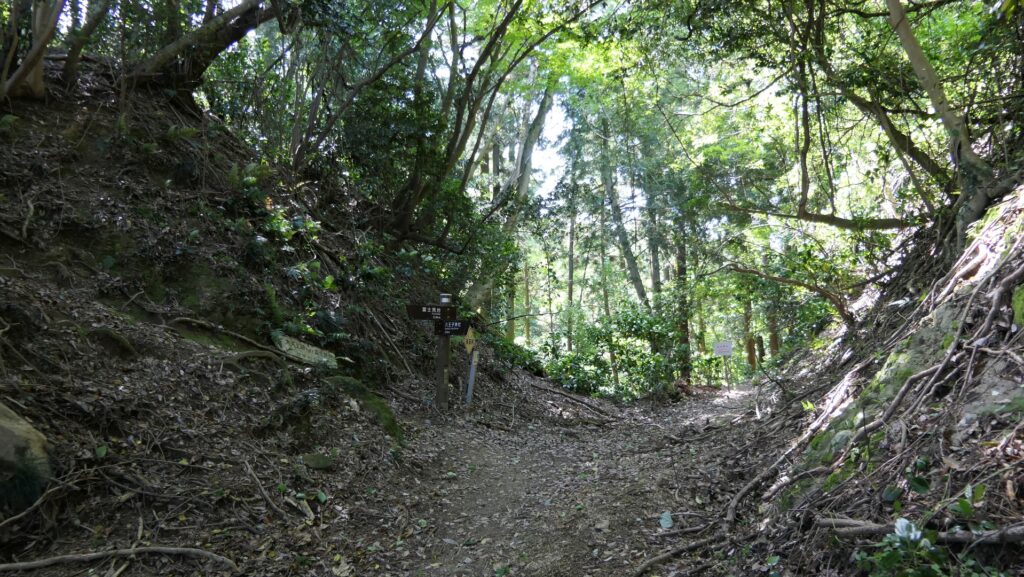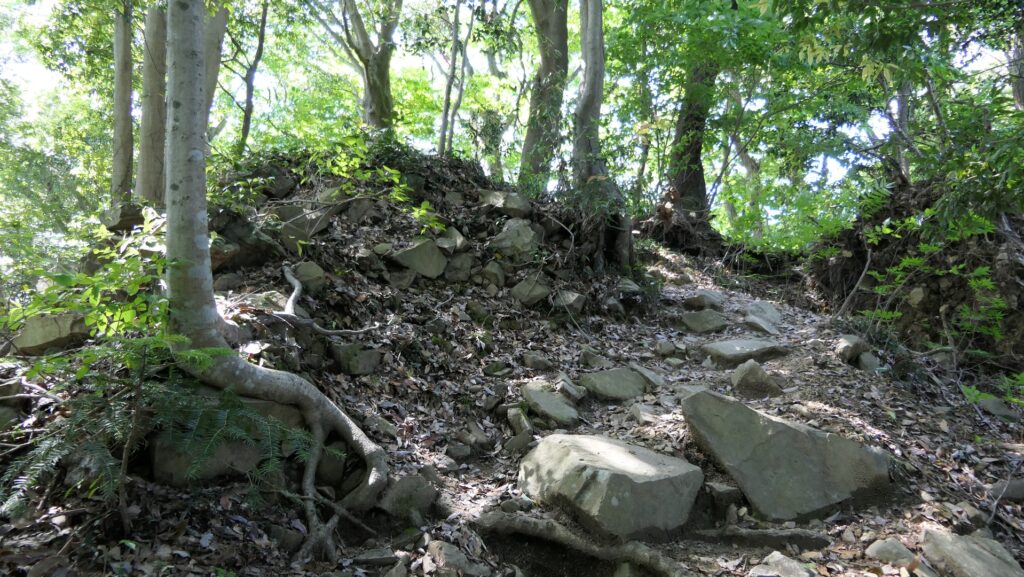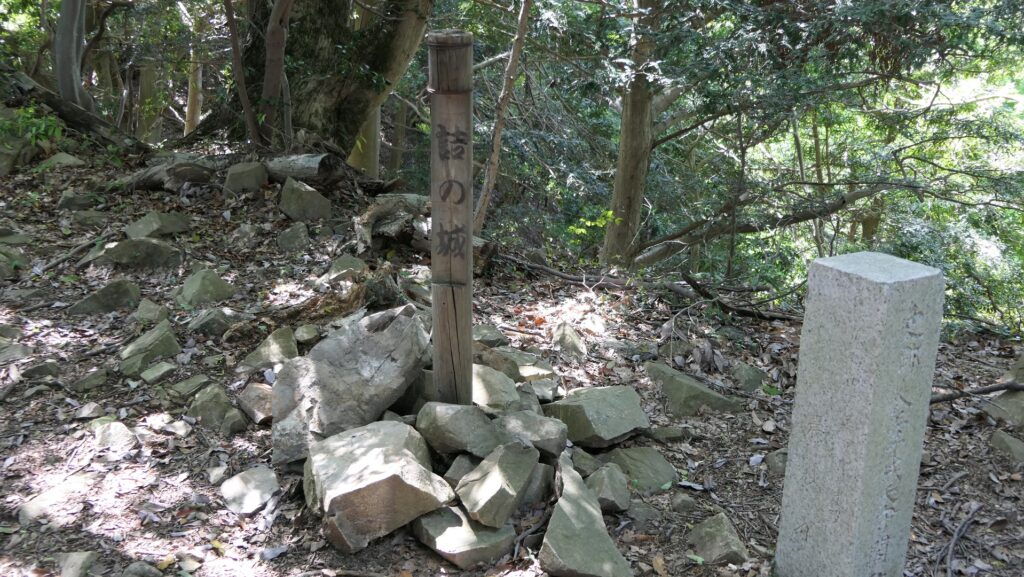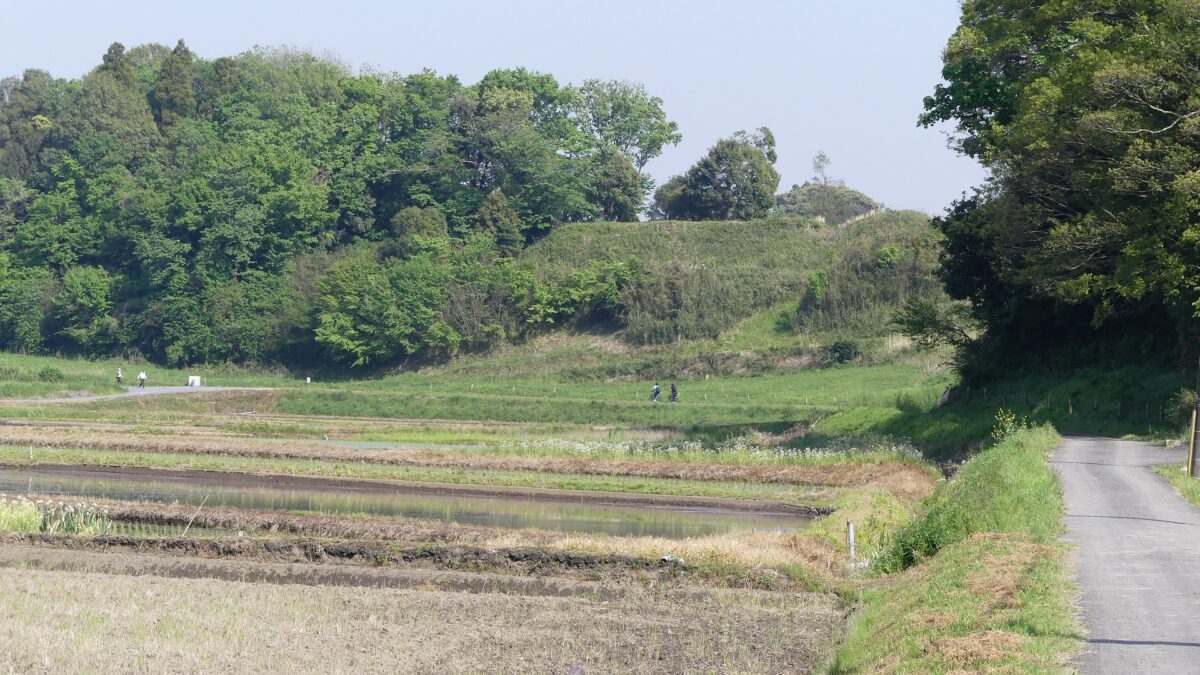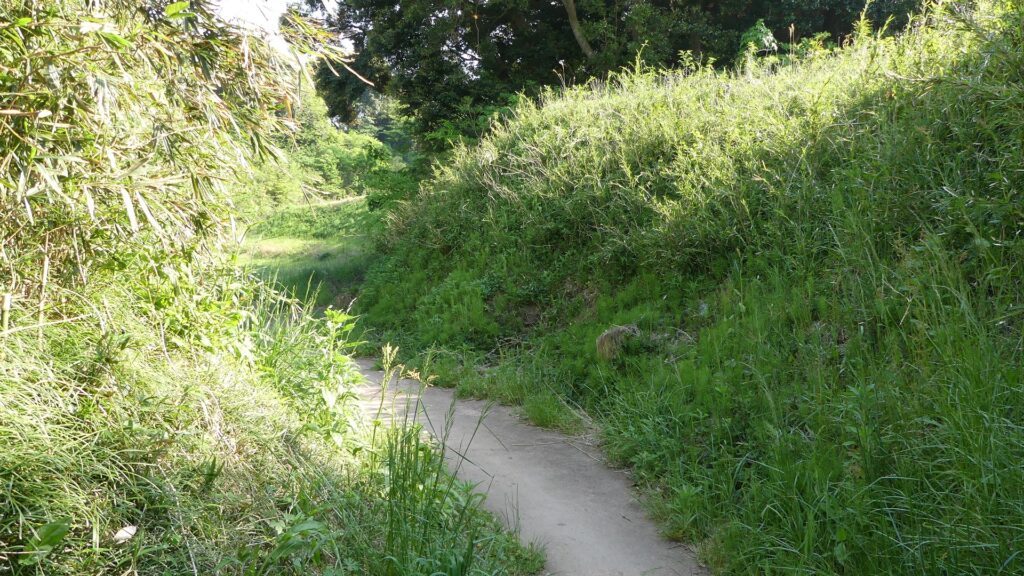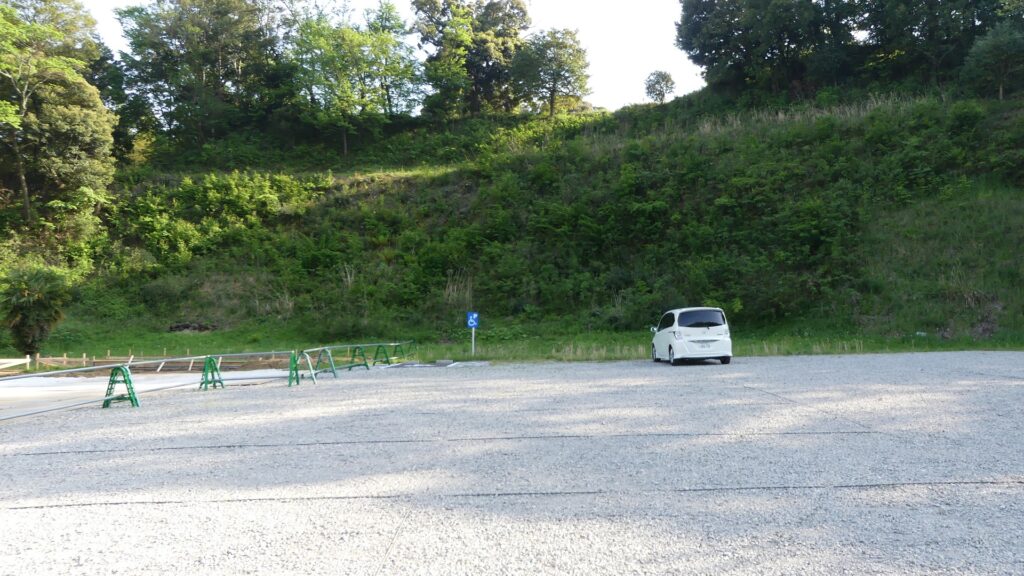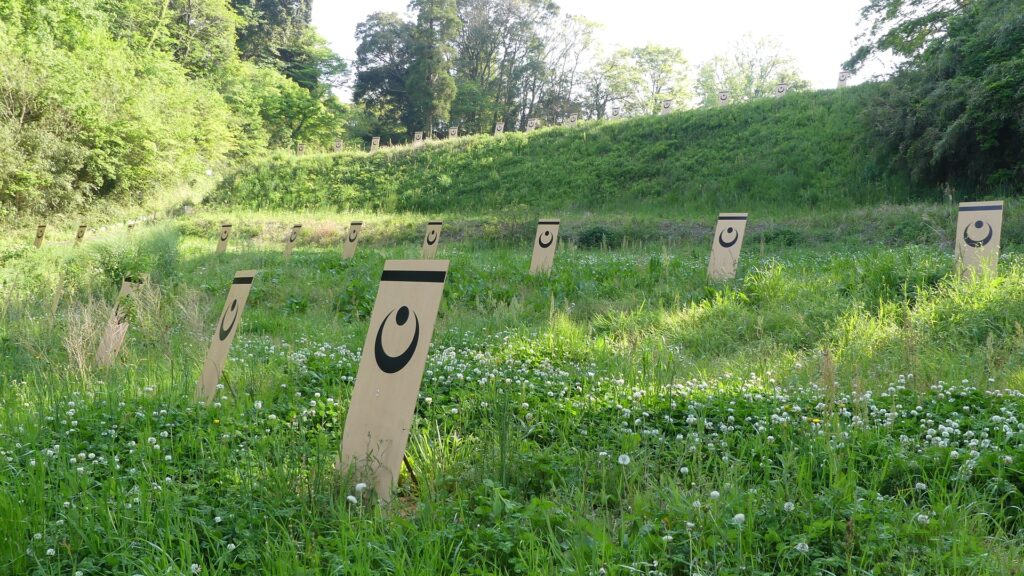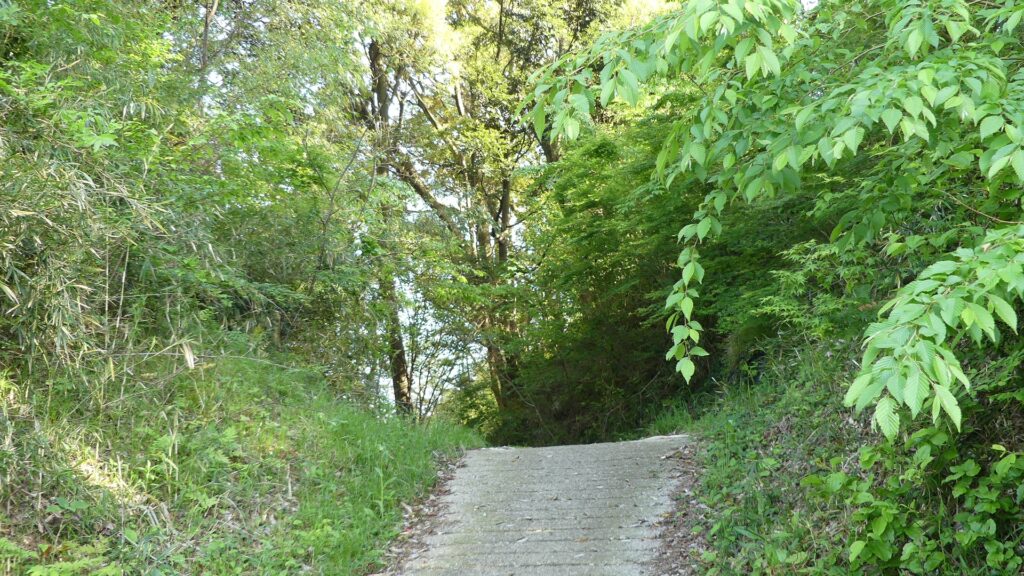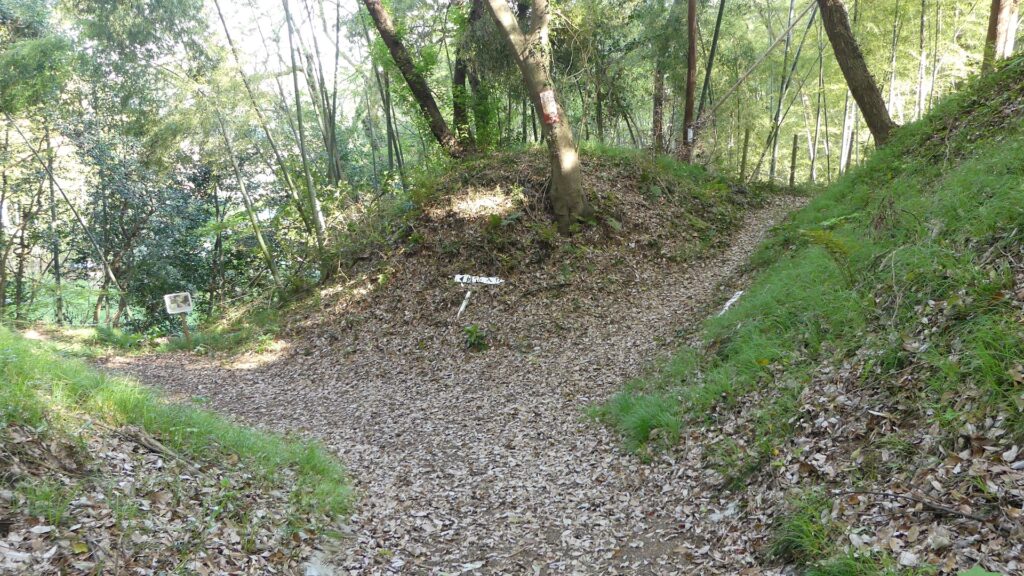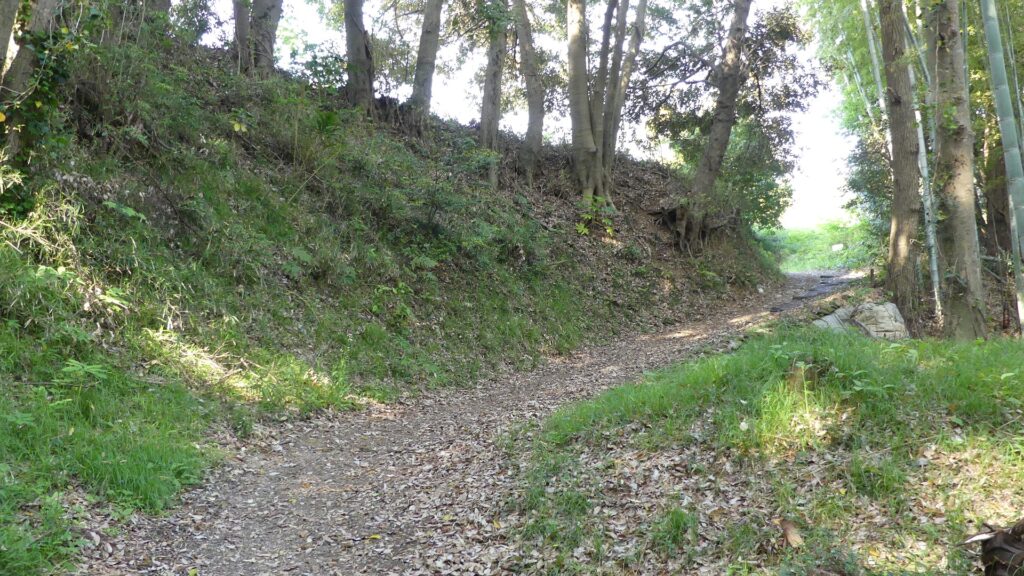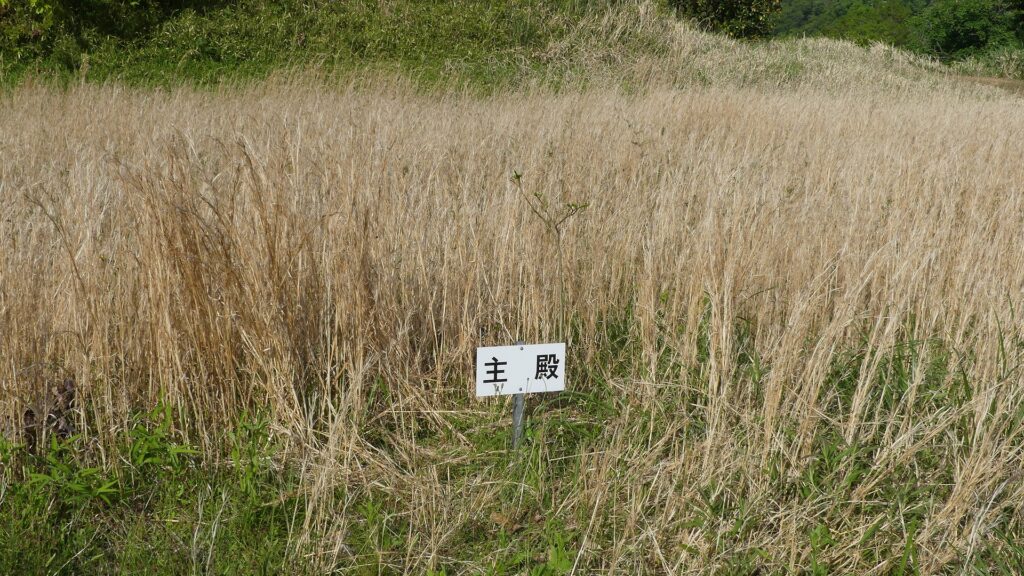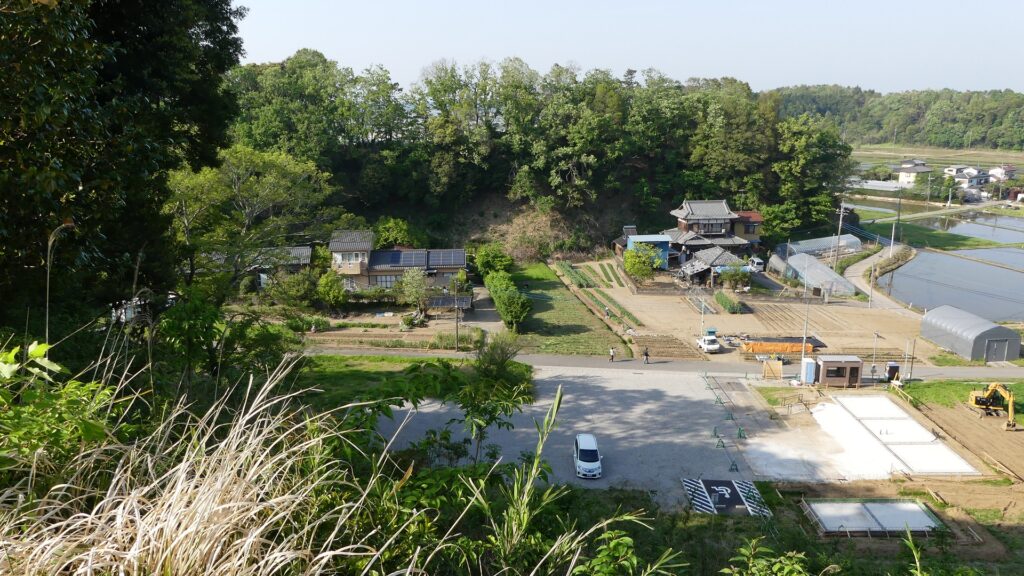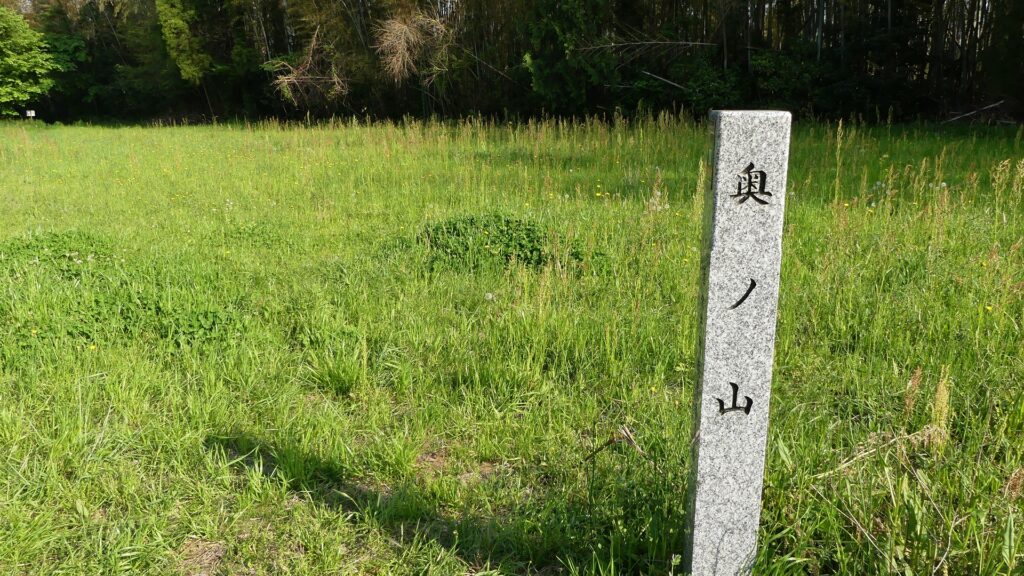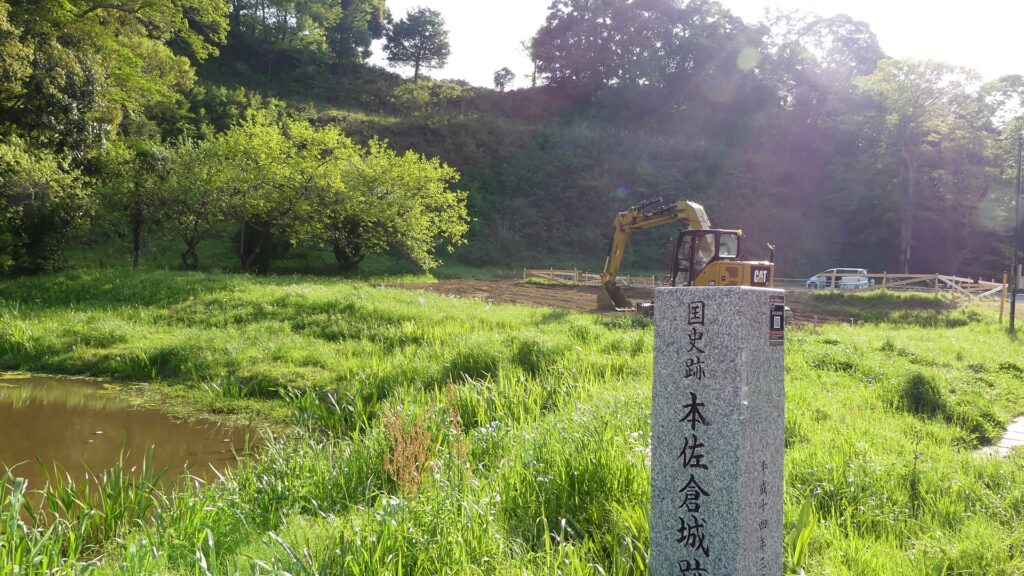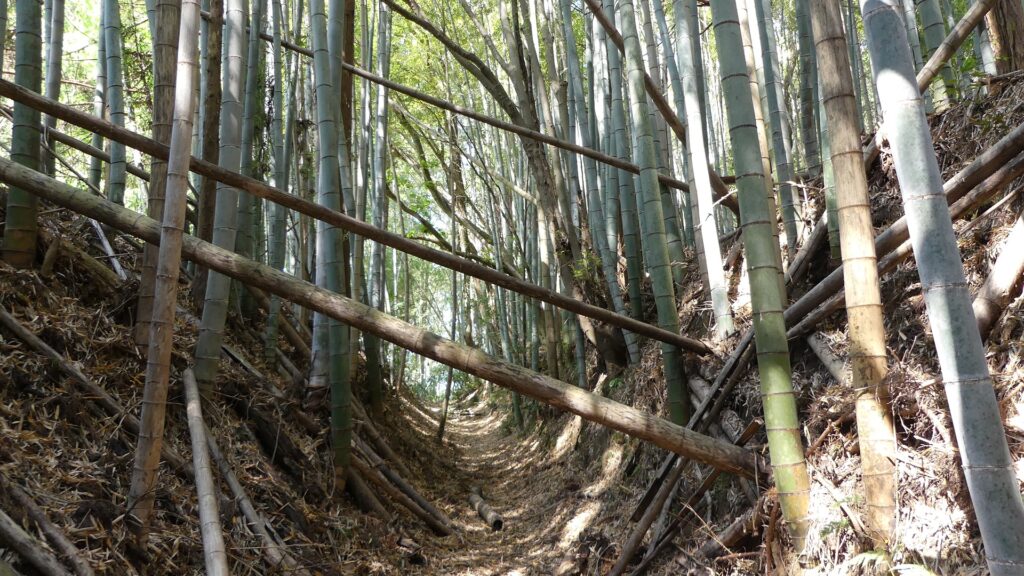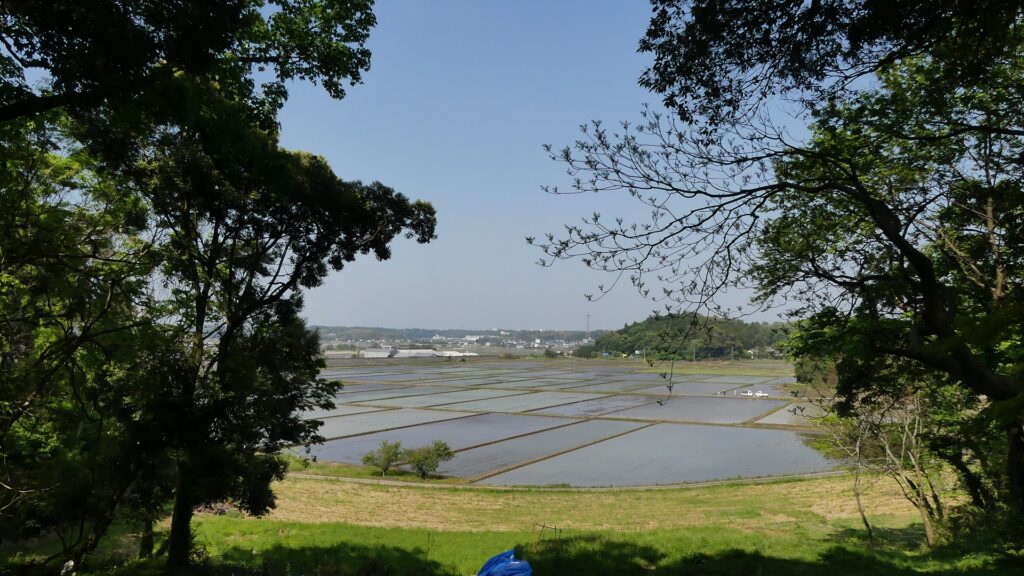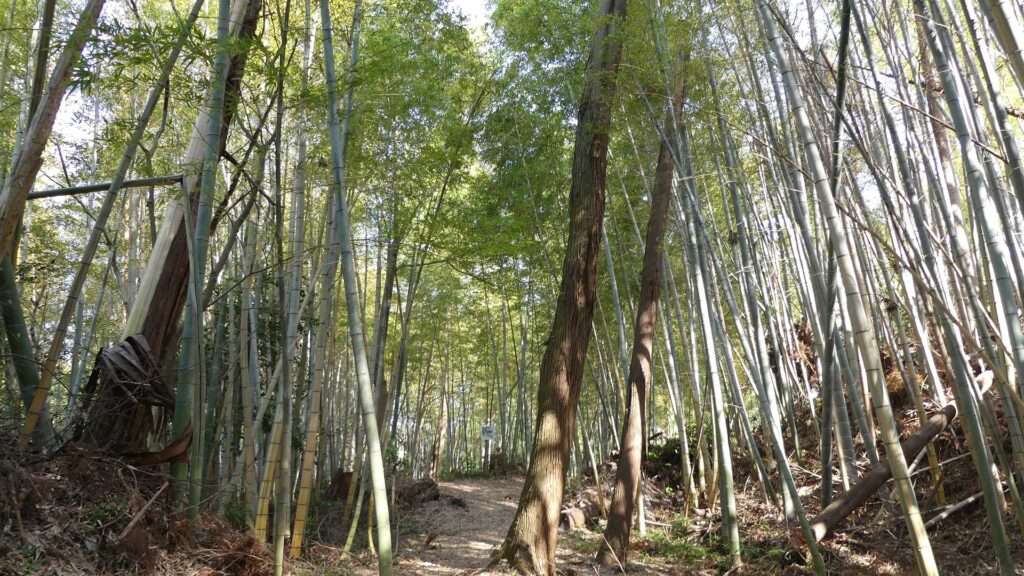Features
Now, you can visit the ruins of Kasugayama Castle easily by car. You can also park at the Kasugayama Shrine located on the mid slope of the mountain and go to the top. However, if you have time, how about walking on the original routes from the foot of the mountain?
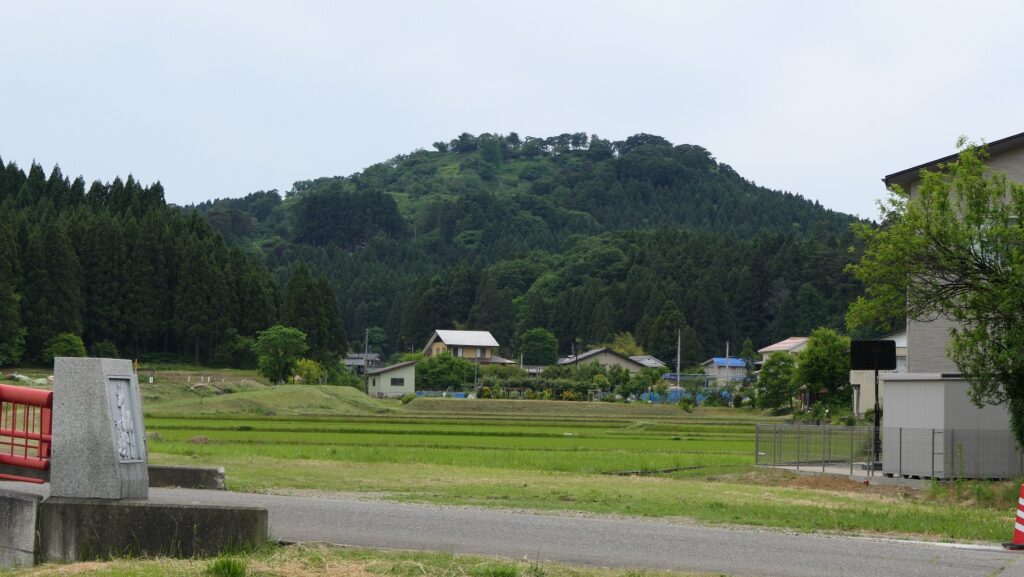
Around Main Route
For example, you can park at the starting point of the Main Route on the way to the shrine. The route was recently developed for visitors, and is about 3.5km to the top, but gently sloped with a laid-back atmosphere. After a while, you will pass beside the ruins of the guard house on a mound. The route gets a little steep and rough and goes through woods and valleys. You will eventually reach a large enclosure called Kakizaki’s Hall. You are near the main portion, so you will arrive at the top after passing Kagekatsu’s Hall and the Well Enclosure.
Around the Main Route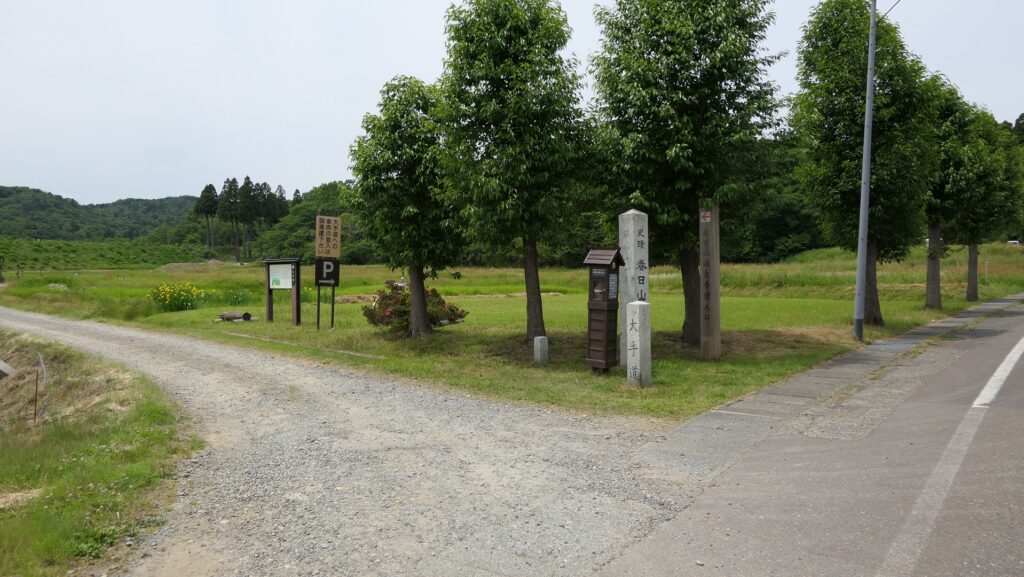
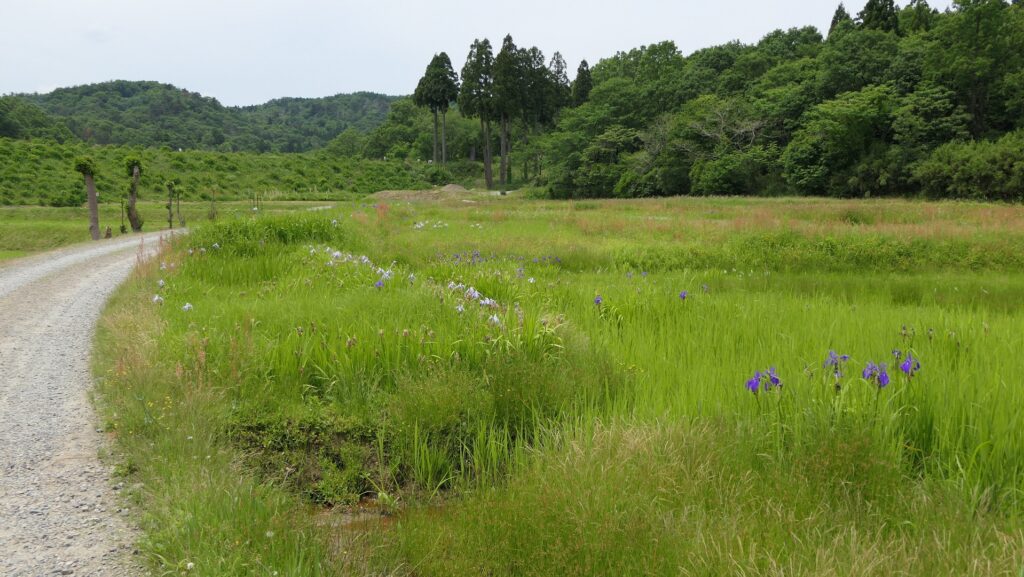
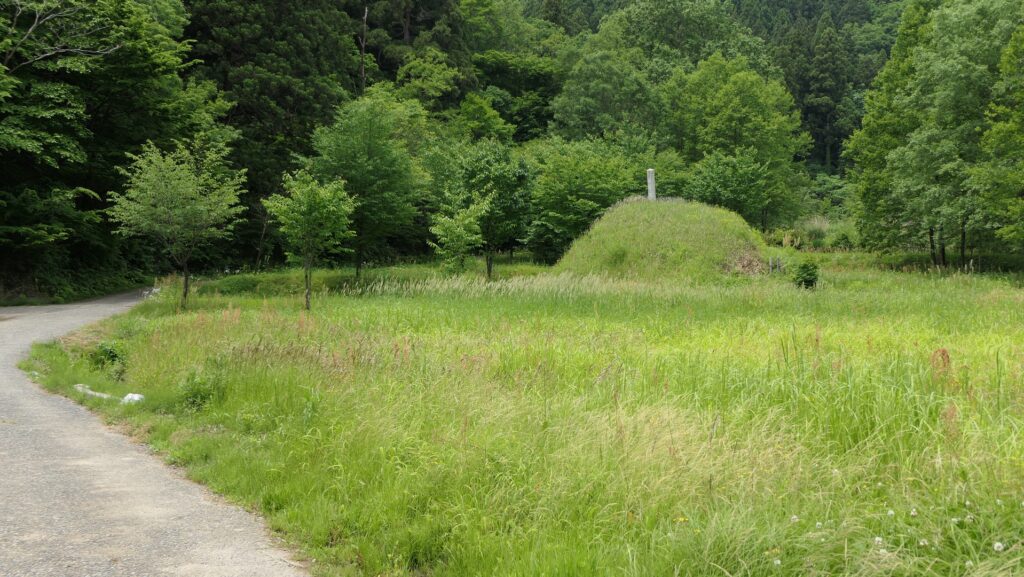
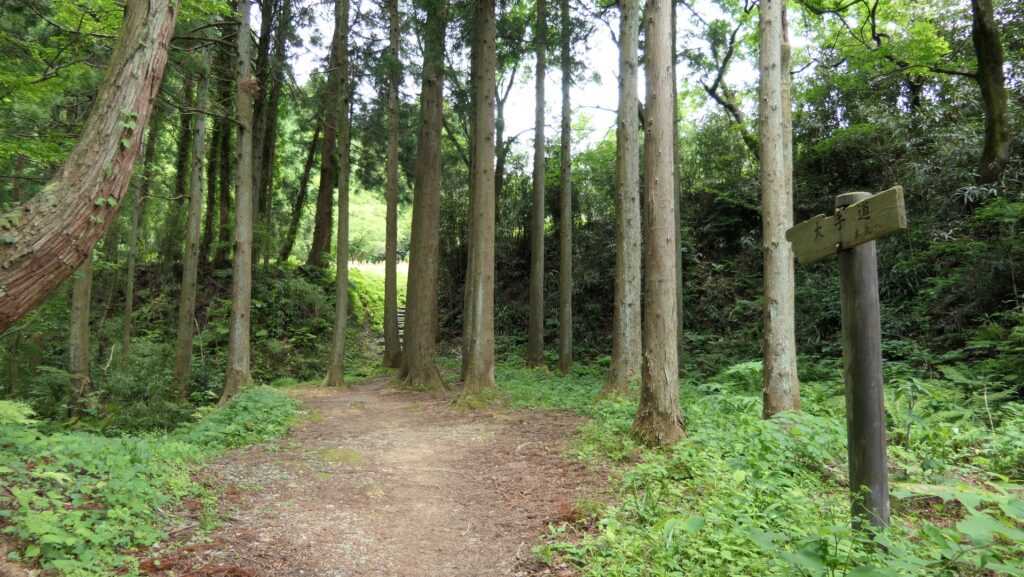

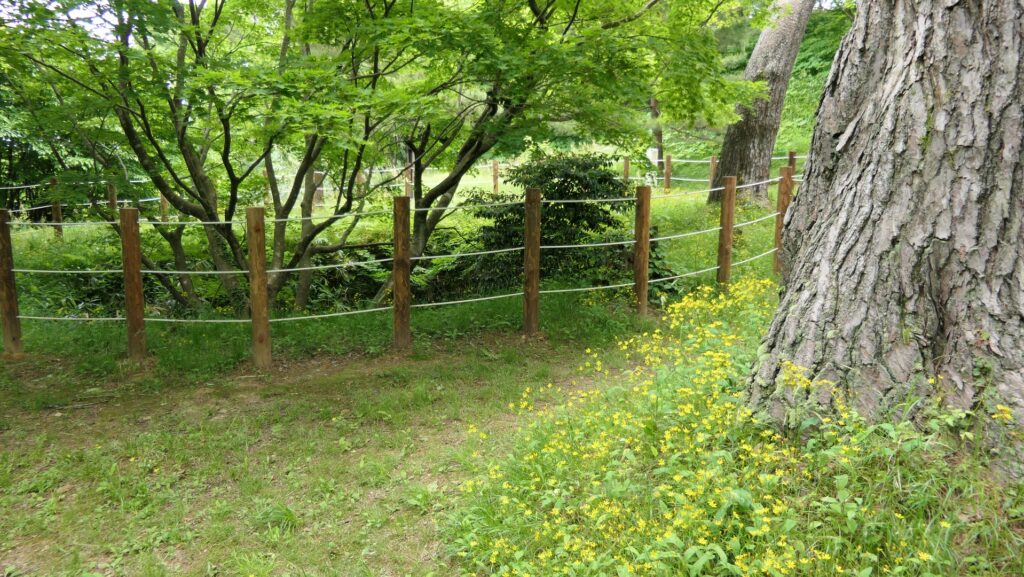
Around Back Route
The alternative is to walk on the Back Route which starts from the Lotus Pond in the Atagoyama Park at the northeast foot of the mountain. You will first enter the ruins of the Kurogane-mon Gate and the Hall for the Lord, which are now surrounded by woods. The route becomes winding and steep before reaching the ruins of the Sengan-mon Gate. The gate was very large and defensive with a deep dry moat inside. You will approach the main portion by climbing the zigzagged route on the Belt Enclosure and the Koguchi Entrance. The entrance is said to once be the front of the castle when it was smaller. The inside of the entrance is Naoe’s Hall on the ridge which is the opposite of Kagekatsu’s Hall in the main portion. This route looks like a mountain castle more than the Main Route.
Around the Back Route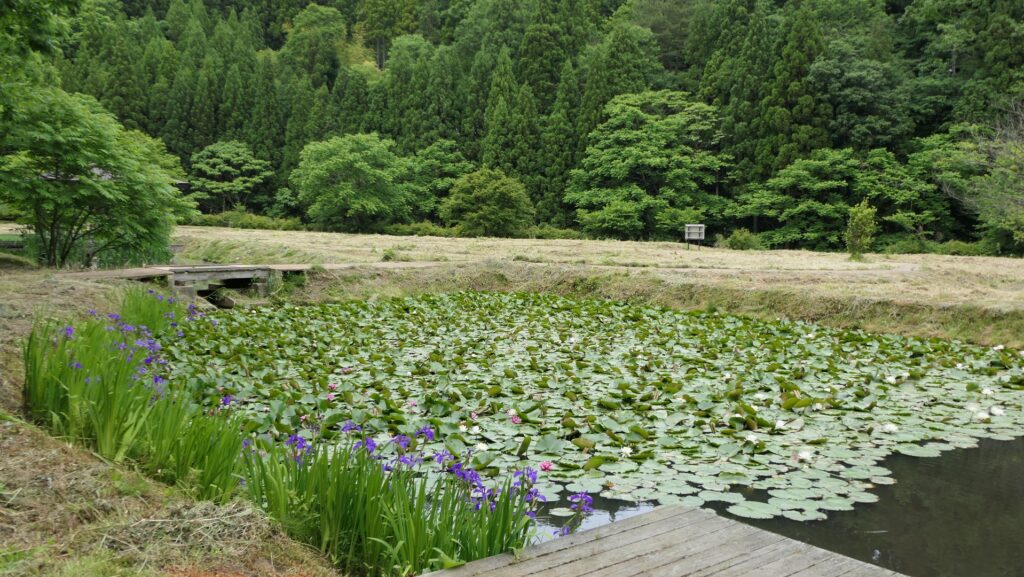
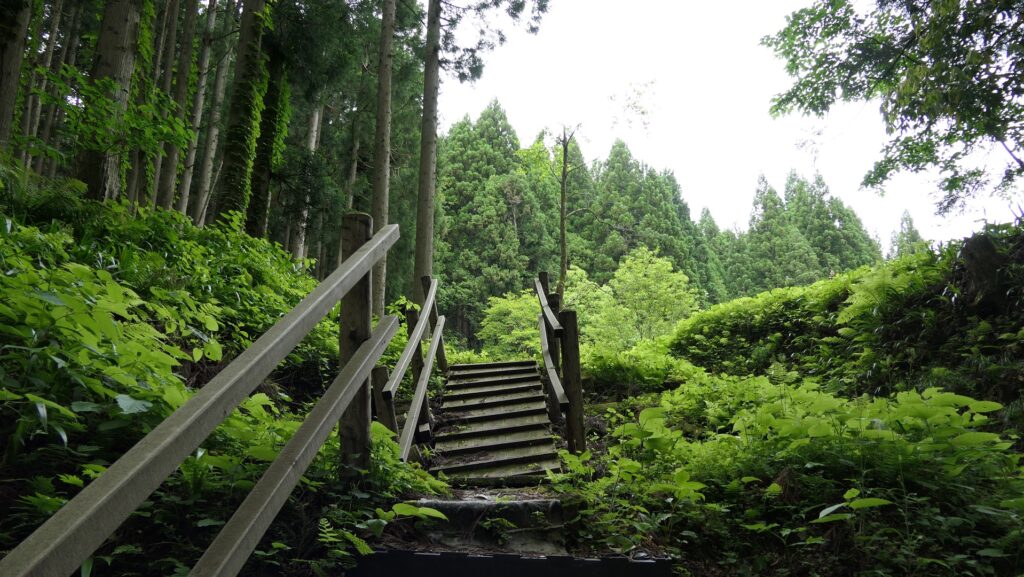
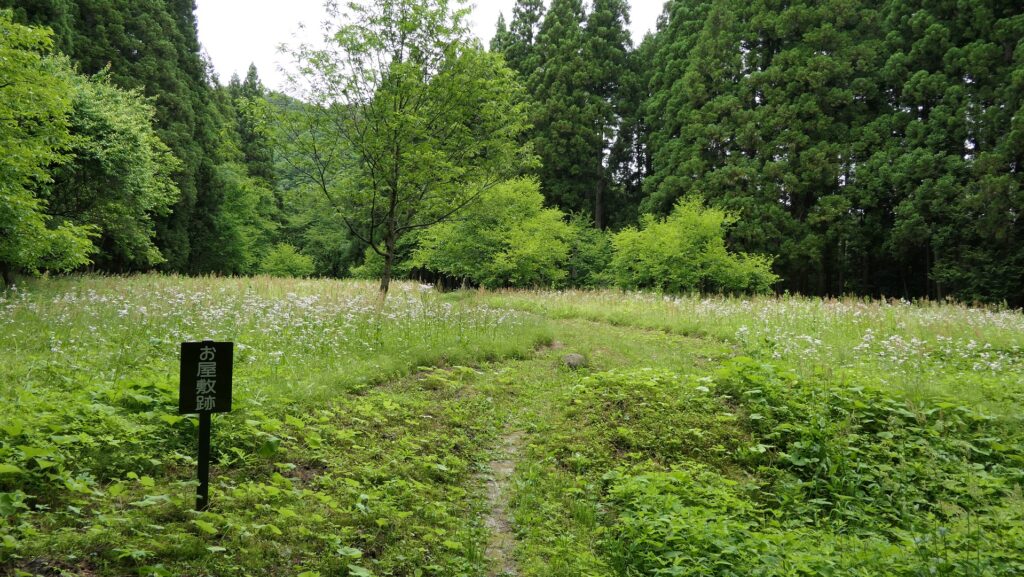
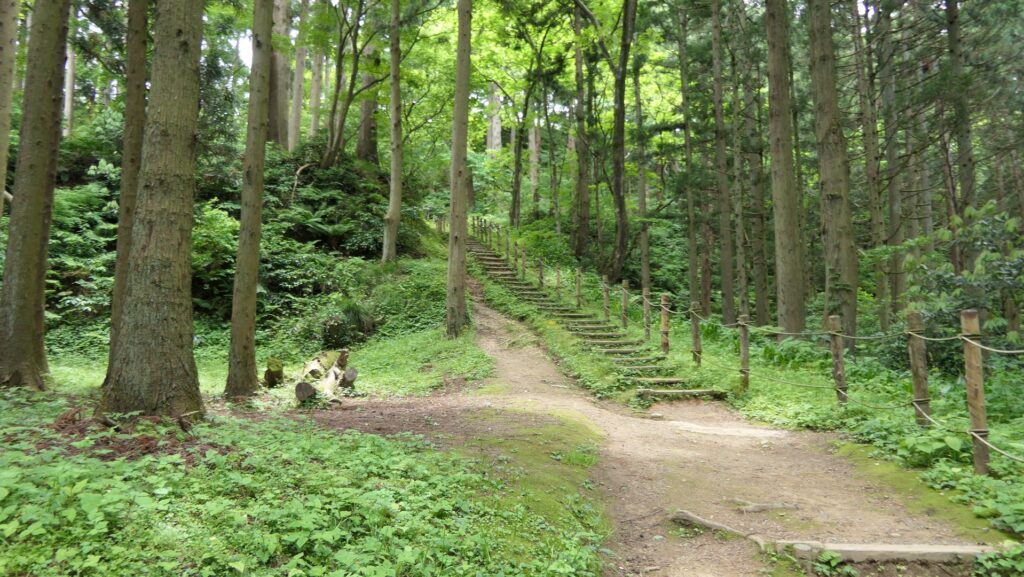
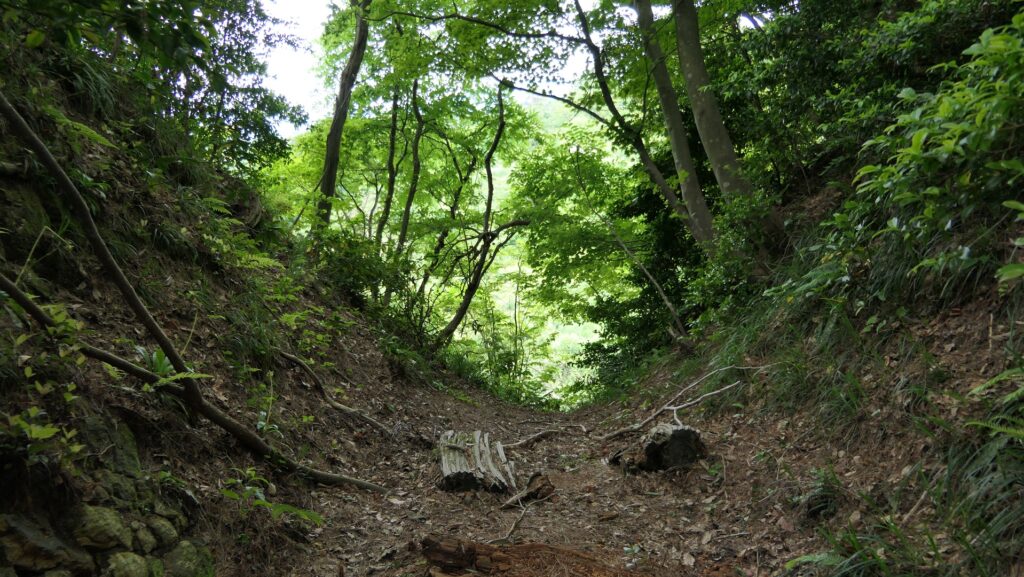
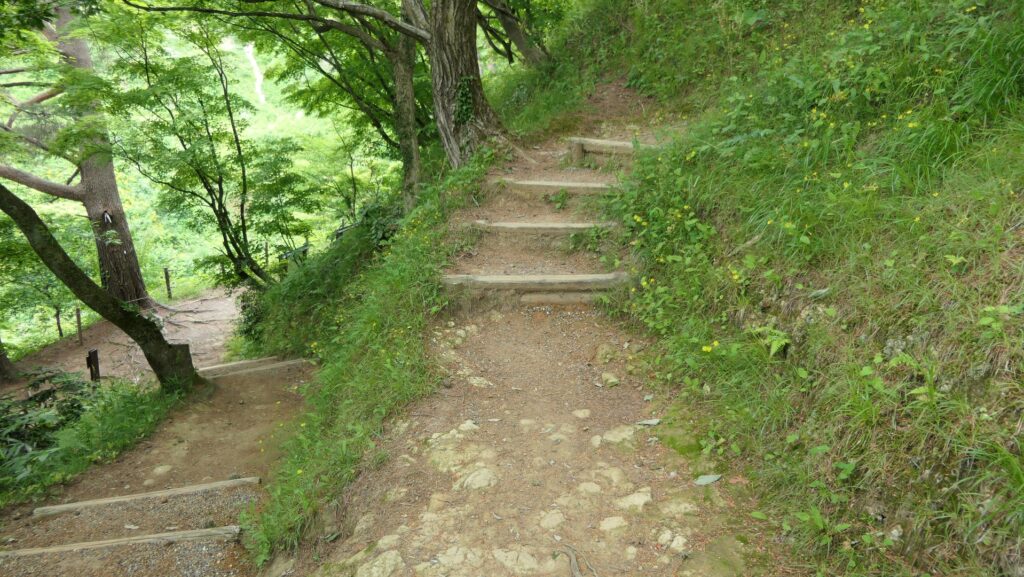
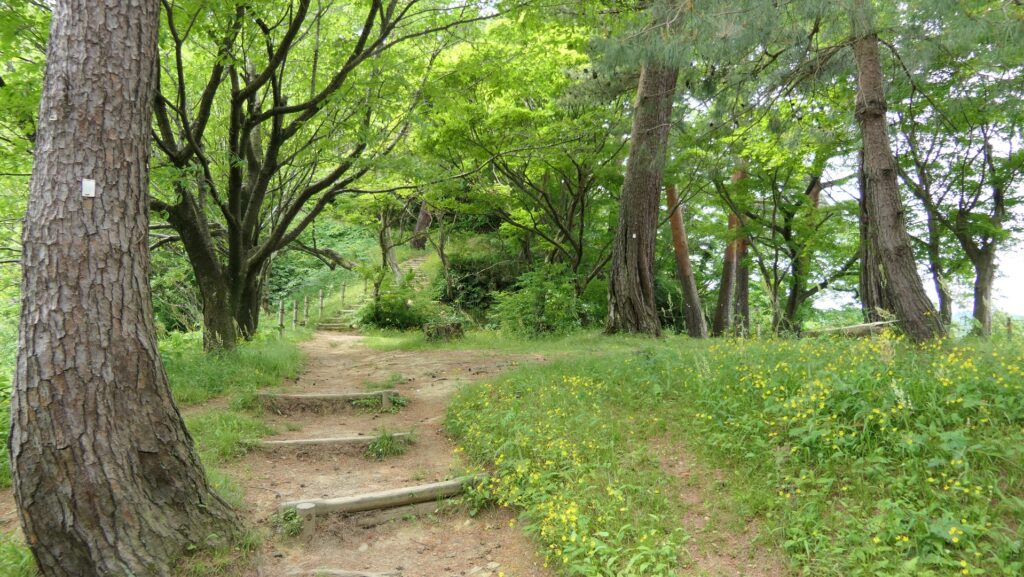
Around Main Enclosure
The Main Enclosure is on the top of the mountain where you can see a good view of the Kubiki Plain and the Japan Sea. The ruins of the Main Tower is next to the Main Enclosure, where it is said a kind of turret actually stood. Some religious facilities also stood around, and only the Bisyamon-do Hall was restored in recent times. Under the Main Enclosure, a lot of enclosures are on the eastern slope of the mountain, such as the Second Enclosure and Kagetora’s Hall. If you look up the top of the mountain from the mid slope, you can see these enclosures still covering the mountain. The Kasugayama Shrine is nearby, and you will see the statue of Kenshin Uesugi.
Around the Main Enclosure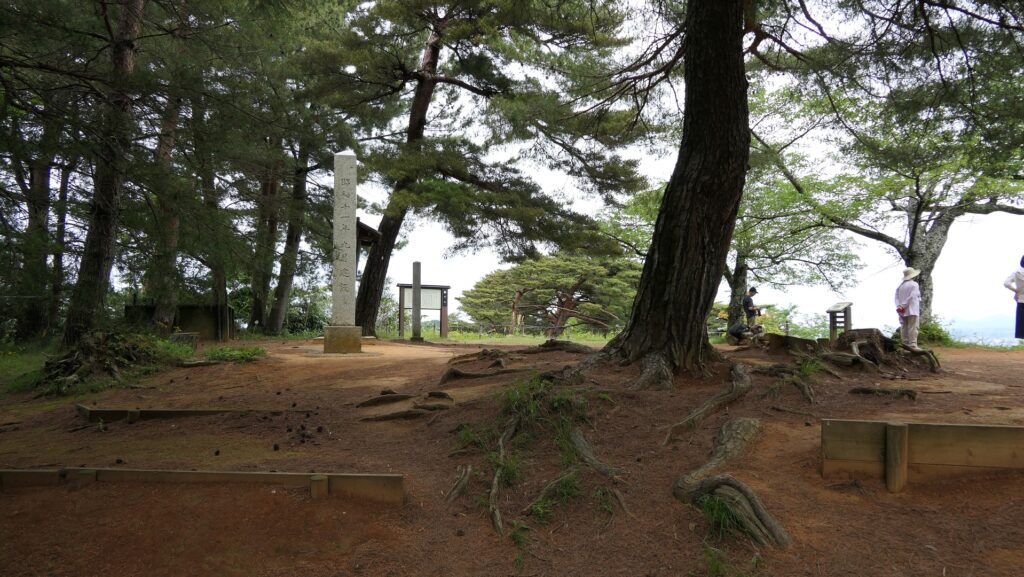
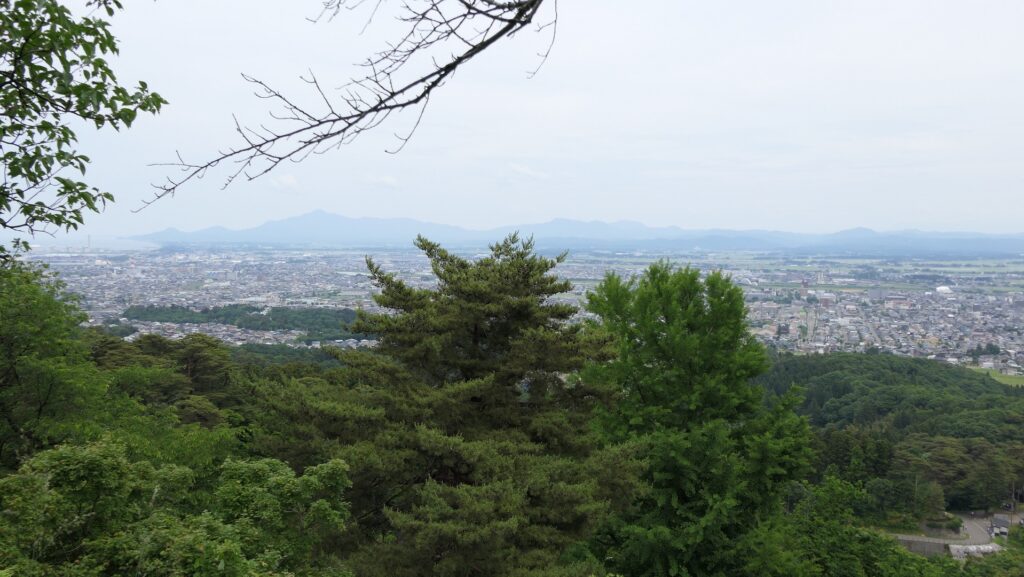
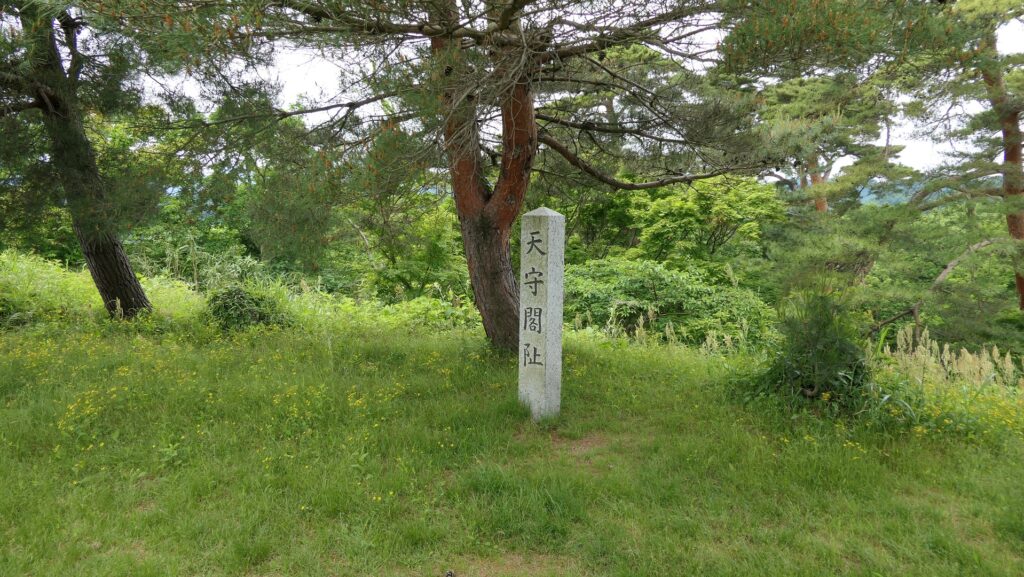

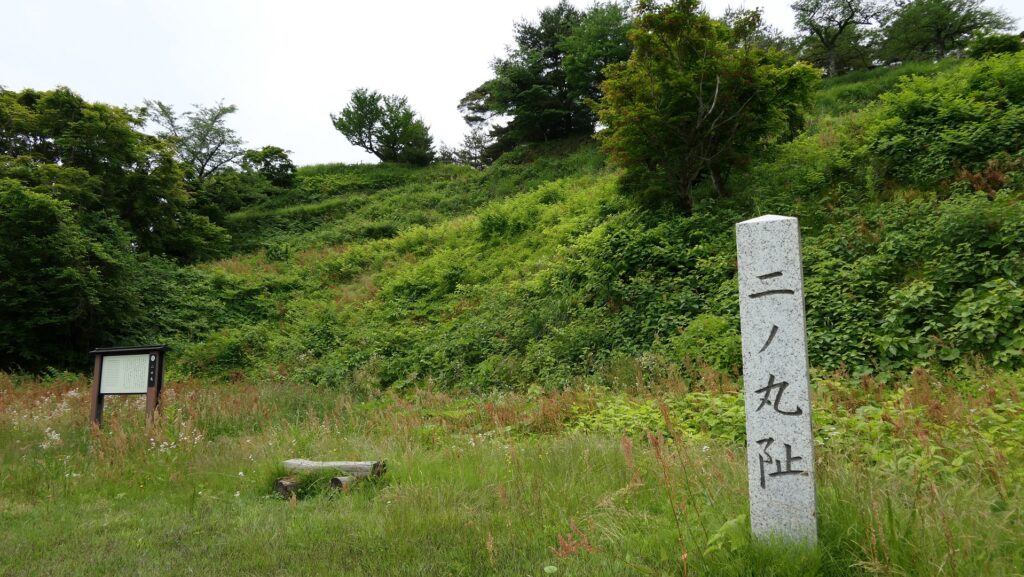
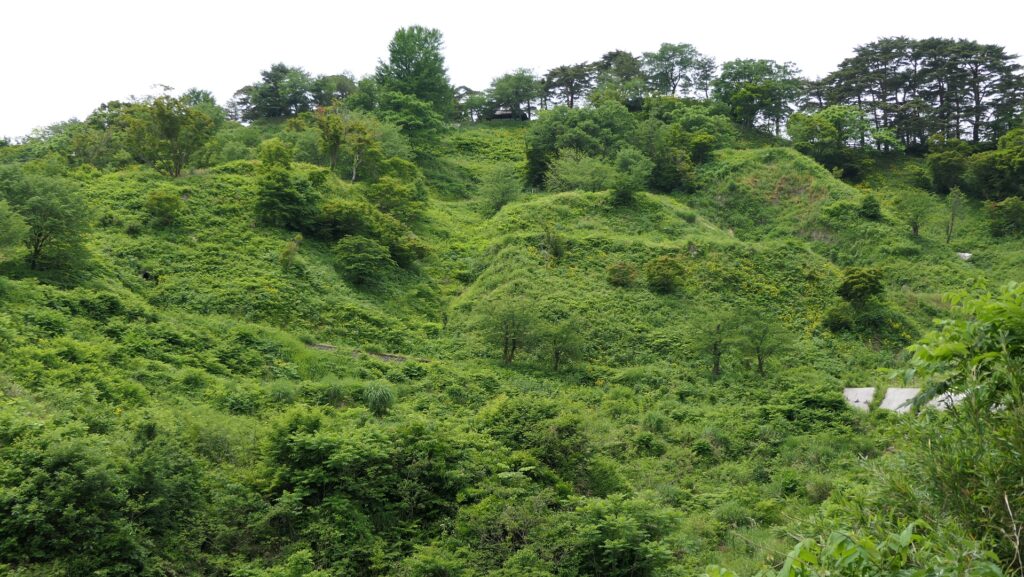
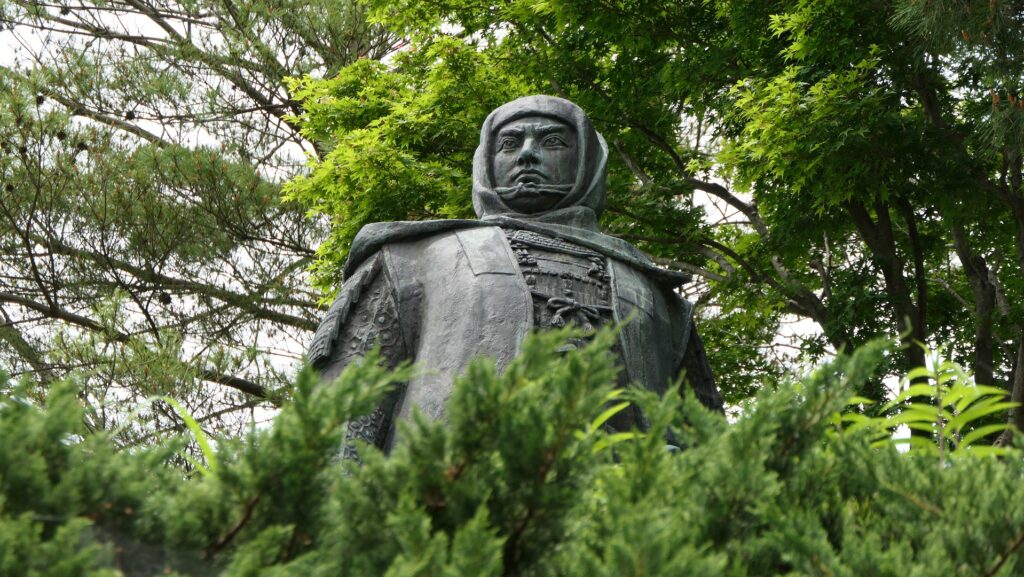
Other Attractions
You can also visit the Kasugayama Castle Historic Site Square where part of the So-gamae outer earthen walls was restored, Joetsu City Buried Cultural Property Center where you can learn more about the castle and Kenshin, and the Rinsen-ji Temple where Kenshin studied in his childhood near the ruins.
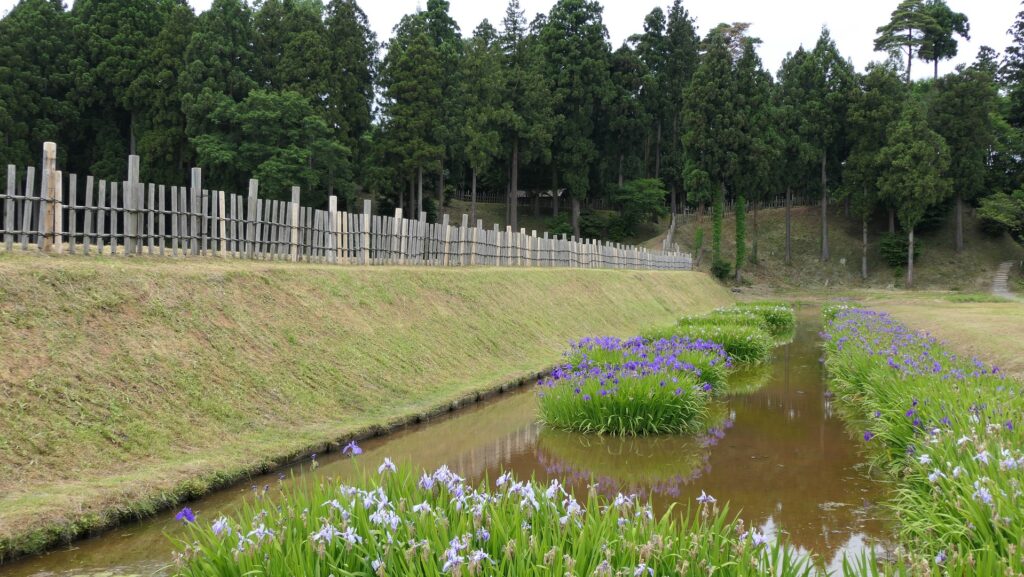

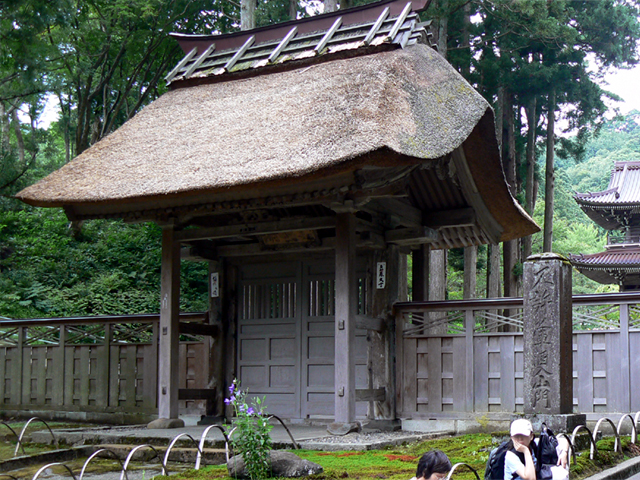
To be continued in “Kasugayama Castle Part3”
Back to “Kasugayama Castle Part1”

